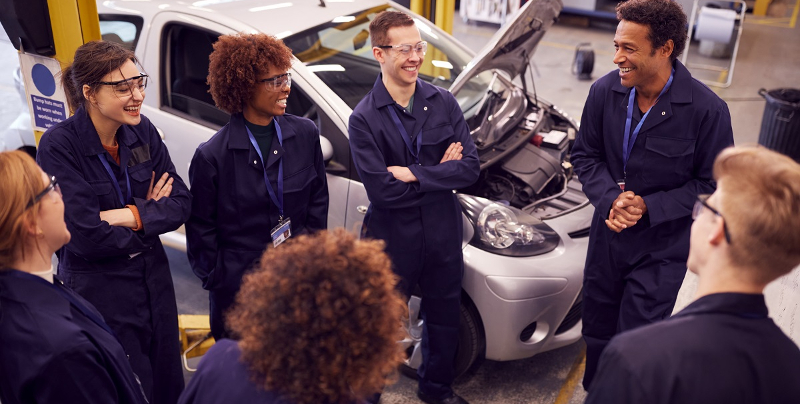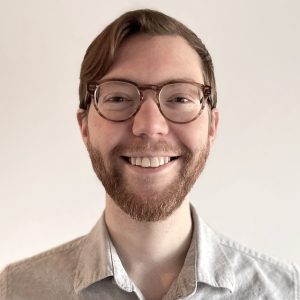In July 2023, our team published “People-powered pathways: Lessons in how to build students’ social capital through career-connected learning.” In the report, we describe successes and challenges in bringing social capital–building strategies to a variety of educational settings. Our observations draw from an 18-month pilot during which we leveraged our social capital playbook to provide direct support to a group of three intermediary organizations—Education Strategy Group, Generation Schools Network, and Hawai‘i P-20—collectively supporting 20 sites in the K–12 career pathways space. In the course of the pilot, we sought to understand how schools and nonprofits can make social capital-building an explicit, effective, and equitable component of existing career-connected learning models.
Schools are increasingly engaging in career-connected learning to increase career exposure and skill development. But focusing on skills alone will fall short, particularly if schools hope to address long-standing opportunity gaps.
That’s because awareness of possible careers and access to jobs depends not only on learning and achievement, but on personal and professional relationships that serve as gateways to career opportunities. Opportunity sits at the intersection of students’ human capital—what they know and can do—and their social capital—who they know and can depend on for support and access. In other words, to launch a career, students need more than skills—they also need people willing to take a bet on their potential.
Creating measures by setting “just right” goals
But how can schools measure the extent to which students are building personal and professional networks? During the planning phase of our pilot, many site teams were unsure how to accurately measure students’ social capital. Surveys of site staff indicated that 85% felt that having student surveys and other measurement tools for social capital would be helpful or very helpful. However, some staff were hesitant to add another survey on top of existing student surveys due to concerns about survey fatigue. With so many potential indicators of social capital, it was sometimes challenging to choose one or two that aligned to the team’s vision and could easily be tacked onto an existing survey.
Without clarity about what constitutes a good indicator of social capital, some had difficulty articulating concrete goals. In turn, these sites usually took one of two approaches to goal development. Some defaulted to implementing activities as the goal itself (e.g., “Our goal is to introduce social capital to 12th-grade students as part of our career-readiness curriculum”). While this type of goal articulates the school or program’s actions, it doesn’t specify the student outcomes that programs hope will result from those actions.
Other sites focused on long-term outcomes (e.g., “Our goal is to increase employability skills”) rather than shorter-term, observable changes in students’ access to and ability to mobilize relationships. These goals were often too broad to be useful in determining how specific relationship-based experiences and activities could help them achieve those goals.
To rightsize goals, schools and programs can ask themselves “What relationships do we want students to have access to or be able to build and maintain as a result of the experiences in our program?” A site may end up with a goal such as “By the end of the school year, each student will have had at least four, 30-minute career conversations with professionals in a potential field of interest” or “By the 12th week of their internship, students will have obtained at least two references from supervisors or colleagues at their internship site whom they feel confident reaching out to.”
Setting concrete, relationship-specific goals requires upfront work: because most programs have not measured students’ social capital, it may take time to unpack various indicators and select a few that best align with their program philosophy and capacity. But by working backward from the goal statement, schools and programs can then design experiences that help students move the needle on these meaningful, relationship-oriented competencies.
Example in action
Adult Friends for Youth (AFY) is a nonprofit serving young people in Hawai‘i at risk of gang membership, violence, and dropping out of high school. Although AFY has created a safe, supportive environment in which youth have built trusting relationships with their staff and leadership, most of the youth they serve have found it challenging to develop close relationships with adults outside of AFY. As part of this initiative, AFY sought to help their participants build positive support networks external to their own staff.
When considering their goals, AFY leadership felt that they needed a good indicator for gauging students’ ability to cultivate connections with adults in service of education and career goals. In turn, they developed a goal specifying that they would help each youth acquire the skills and confidence to develop positive relationships with adults outside of AFY and cultivate them to the point where they felt comfortable enough to obtain a reference from at least two of those individuals.
This goal helped guide the development of group counseling sessions in which AFY staff helped youth identify adults in their lives that they felt could help them with career or college preparation, and to begin having conversations with these individuals about their goals. It also guided the design of experiences in which AFY introduced their youth to new relationships.
To ensure that these relationships were positive and supportive, AFY was very intentional about who they chose to connect with their students. For example, AFY helped one youth connect with the owner of a t-shirt printing business with whom AFY staff already had a close relationship. After a few initial conversations, the business owner offered the young person an apprenticeship and quickly became a close mentor.
AFY also gradually built students’ confidence to create connections that could improve their lives in other ways, such as offering their participants the opportunity to meet with a Hawai‘i state senator to advocate for renovations to the public housing community they lived in. Although nervous at first, AFY’s youth later reflected about how this meeting was a major turning point that increased their confidence in talking with authority figures because the senator was highly approachable and genuinely interested in what they had to say. This meeting led to a series of additional meetings with public officials that further bolstered their confidence, including an opportunity for some students (whom AFY felt had made significant progress with communication skills and self-efficacy) to travel to Washington, DC, to meet with a US senator about the housing renovations. Because of the success of the trip, AFY is planning to expand these types of opportunities to other youth as they progress in their self-efficacy to have conversations with adults beyond AFY staff.
Building social capital is an indispensable part of career-connected learning that goes beyond mere skill acquisition to forge meaningful relationships. Our pilot underscores the need for educational settings to integrate social capital-building into their existing models, with clear, relationship-specific goals to guide the process.
Adult Friends for Youth in Hawai‘i serve as a compelling example, demonstrating how intentional relationship-building and goal setting can empower students to advocate for themselves and their communities. As we continue to explore this topic in upcoming blogs, we remain committed to uncovering strategies that make social capital an explicit, effective, and equitable component of education.


